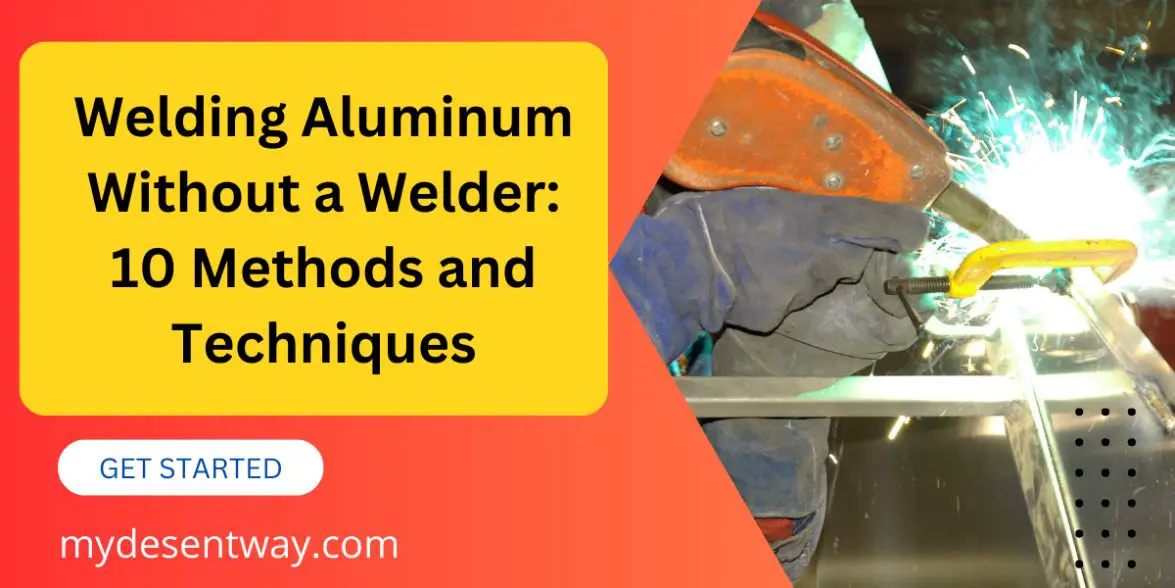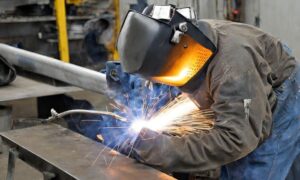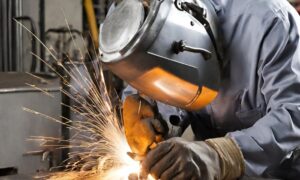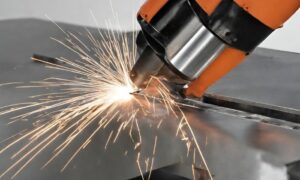Table of Contents
- Absolutely! Various alternative methods allow welding without a traditional welder. Techniques like brazing, using a torch, or cold welding provide accessible options for aluminum welding without specialized equipment.
- 1. How to Weld Aluminum
- 2. Methods for Welding Aluminum Without a Welder
- 3. Preparing for Aluminum Welding
- 4. Brazing as an Alternative Method
- 5. Using a Propane Torch
- 6. Cold Welding Techniques
- 7. Tips for Successful Aluminum Welding Without a Welder
- 8. Advantages of Welding Aluminum Without a Welder
- 9. Challenges and Limitations
- 10. Applications and Scenarios
- 11. Safety Measures During Aluminum Welding
- 12. Comparison with Traditional Welding
- Conclusion
- FAQs
Absolutely! Various alternative methods allow welding without a traditional welder. Techniques like brazing, using a torch, or cold welding provide accessible options for aluminum welding without specialized equipment.
Welding aluminum is a craft that demands precision, patience, and a deep understanding of the materials involved. While a welder is a traditional tool for this job, there are alternative methods for those who don’t have access to one. In this article, we will explore various techniques and expert tips for welding aluminum without a welder.
1. How to Weld Aluminum
Aluminum welding fundamentally involves fusing aluminum pieces together using heat. However, the challenge lies in managing the temperature precisely due to aluminum’s high thermal conductivity.
This characteristic causes the metal to dissipate heat rapidly, making it prone to warping or burn-through if not handled meticulously during the welding process.
Importance of Welding Aluminum Without a Welder
The significance of learning how to weld aluminum without a welder stems from its accessibility and versatility. Many enthusiasts, hobbyists, or even professionals may not have access to expensive welding equipment or may require a quick fix or modification without the complexity of traditional welding setups. Hence, exploring alternative methods becomes imperative to cater to diverse needs and constraints.
The quest to weld aluminum without a welder isn’t just about convenience; it’s about empowering individuals to explore creative solutions, undertake DIY projects, or make essential repairs without relying on specialized machinery or professional assistance.
By delving into alternative techniques such as brazing, utilizing propane torches, or employing cold welding methods, individuals can expand their skill set and accomplish aluminum welding tasks effectively, fostering innovation and self-reliance in various fields.
2. Methods for Welding Aluminum Without a Welder
Welding aluminum without a traditional welder requires alternative techniques that leverage different principles of joining metals. These methods offer viable solutions for individuals seeking to accomplish aluminum welding without access to specialized equipment.
Brazing as an Alternative Method
Explaining Brazing Process
Brazing involves joining aluminum pieces using a filler material, usually a metal alloy with a lower melting point than the base metal. The filler material, often in the form of a rod or wire, melts and flows between the aluminum pieces, creating a strong bond upon cooling.
Materials Required
To brazze aluminum effectively, specific materials are essential: a brazing torch, filler rod compatible with aluminum, flux to remove oxides, and protective gear like gloves and goggles.
Step-by-Step Guide
- Preparation: Clean the aluminum surface thoroughly to remove any contaminants or oxides that hinder bonding.
- Apply Flux: Coat the aluminum pieces and the filler rod with flux to prevent oxidation during the heating process.
- Heat Application: Use the brazing torch to heat the aluminum pieces evenly, allowing the filler rod to melt and flow into the joint.
- Cooling and Solidification: Let the joint cool naturally to ensure a strong bond between the aluminum pieces.
Using a Propane Torch
Choosing the Right Torch
Selecting a propane torch suitable for aluminum welding is crucial. Opt for torches with adjustable flames to regulate heat and ensure precise control during the welding process.
Preparing Aluminum and Torch
Before welding, clean the aluminum surface thoroughly. Ensure the propane torch is in good working condition and that safety precautions, including protective gear, are in place.
Step-by-Step Procedure
- Surface Preparation: Clean the aluminum surface to remove dirt, oils, or contaminants.
- Torch Adjustment: Adjust the propane torch to achieve the desired flame and heat intensity.
- Welding Process: Apply heat to the aluminum pieces gradually, moving the torch in a controlled manner to avoid overheating.
- Cooling Phase: Allow the welded area to cool gradually to ensure a strong and durable bond.
Cold Welding Techniques
Understanding Cold Welding
Cold welding involves joining metals at room temperature without the application of heat. It relies on pressure and force to create a molecular bond between clean metal surfaces.
Tools Required
To perform cold welding on aluminum, specialized tools like cold welding kits or machines capable of exerting sufficient pressure are necessary.
Procedure for Cold Welding Aluminum
- Surface Preparation: Ensure the aluminum surfaces are clean and free from contaminants.
- Pressure Application: Use the cold welding equipment to apply pressure to the aluminum pieces, allowing them to bond at room temperature.
- Verification of Bond: Verify the strength of the bond by conducting tests or inspections to ensure a secure joint.
3. Preparing for Aluminum Welding
Before initiating the welding process, adequate preparation is essential to ensure optimal results and safety during aluminum welding without a traditional welder.
Cleaning the Aluminum Surface
The importance of Clean Surfaces
Aluminum, especially when exposed to the environment, tends to develop surface contaminants, oxidation, or residues that inhibit proper bonding. Cleaning the aluminum surface is crucial to remove these impediments.
Cleaning Procedure
- Degreasing: Use a degreaser or solvent to eliminate oils, grease, or dirt from the aluminum surface.
- Abrasive Cleaning: Employ an abrasive method like sanding or wire brushing to remove oxides or corrosion, ensuring a clean metal surface for welding.
- Final Cleaning: Wipe the surface with a clean cloth and solvent to eliminate any remaining residues or contaminants.
Ensuring Safety Measures
Protective Gear
Welding, regardless of the method, poses inherent risks. Protective gear, including welding gloves, goggles, a welding helmet with a suitable lens, and appropriate clothing, is indispensable to safeguard against potential hazards like sparks, heat, or fumes.
Ventilation and Workspace
Ensure adequate ventilation in the workspace to disperse fumes and gases emitted during the welding process. A well-ventilated area reduces the risk of inhalation of harmful substances and maintains a safe working environment.
Fire Safety
Have fire safety equipment readily available, such as a fire extinguisher, to address any potential fire hazards. Additionally, keep flammable materials away from the welding area to prevent accidents.
4. Brazing as an Alternative Method
Explaining Brazing Process
Brazing serves as an effective alternative to traditional welding for joining aluminum pieces. It involves a unique process that utilizes a filler material to create a strong bond between aluminum components.
Understanding the Mechanism
The brazing process relies on capillary action, where the molten filler material flows between the joints of clean, closely fitted aluminum pieces. As the filler material cools and solidifies, it forms a robust bond, uniting the aluminum components.
Materials Required
-
Brazing Torch
A specialized brazing torch is necessary for the brazing process. This torch generates sufficient heat to melt the filler material without overheating the aluminum pieces.
-
Filler Rod and Flux
Select a filler rod compatible with aluminum, typically made of an alloy with a lower melting point than the base metal. Flux is essential to prevent oxidation during the brazing process, facilitating a clean joint.
Step-by-Step Guide
1. Preparation
Thoroughly clean the aluminum surfaces to remove any contaminants, oxides, or impurities that may hinder the brazing process. This step is crucial for ensuring a strong and durable bond.
2. Apply Flux
Coat the aluminum pieces and the filler rod with flux. The flux aids in cleaning the surfaces and prevents oxidation during the heating process.
3. Heat Application
Use the brazing torch to apply heat evenly to the aluminum pieces. Maintain a steady heat to avoid overheating while allowing the filler rod to melt and flow into the joint through capillary action.
4. Cooling and Solidification
Allow the joint to cool naturally without abrupt cooling methods. The gradual cooling process ensures the formation of a robust bond between the aluminum components.
5. Using a Propane Torch
Choosing the Right Torch
Selecting an appropriate propane torch is pivotal when welding aluminum without a welder. The torch’s features and functionality significantly impact the welding process.
Adjustable Flame
Opt for a torch that offers adjustable flame settings. This feature enables precise control over the heat output, which is crucial for welding aluminum without causing damage due to excessive heat.
Durability and Quality
Ensure the torch is durable and of high quality. A reliable torch guarantees consistent performance throughout the welding process, reducing the risk of malfunctions or inefficiencies.
Preparing Aluminum and a torch
Surface Preparation
Before welding, prepare the aluminum surface meticulously. Remove any contaminants, oils, or dirt that might impede the welding process. A clean surface promotes better bonding.
Torch Readiness
Check the propane torch for functionality and proper fuel levels. Verify that the torch is in good working condition, with no leaks or defects, to ensure a smooth welding operation.
Step-by-Step Procedure
1. Surface Preparation
Thoroughly clean the aluminum surface to eliminate any debris or contaminants. Use a suitable cleaning method such as degreasing or abrasion to achieve a clean, oxide-free surface.
2. Torch Adjustment
Adjust the propane torch to achieve the desired flame intensity and size. Controlling the flame is crucial for maintaining the appropriate heat level during the welding process.
3. Welding Process
Apply the flame to the aluminum pieces gradually and evenly. Move the torch in a controlled manner, ensuring that the heat is distributed uniformly across the welding area.
4. Cooling Phase
Allow the welded area to cool gradually. Abrupt cooling can compromise the integrity of the weld. A slow cooling process helps solidify the joint and ensures its strength.
6. Cold Welding Techniques
Understanding Cold Welding
Cold welding presents a distinctive approach to joining aluminum without the use of heat. Unlike traditional welding methods that rely on high temperatures to fuse metals, cold welding achieves bonding at room temperature.
Mechanism of Cold Welding
Cold welding involves applying pressure or force to clean metal surfaces, causing their atomic structures to bond. When two clean and compatible metal surfaces are brought together under pressure, they fuse at the molecular level, forming a solid joint.
Tools Required
Cold Welding Kits or Machines
Specialized tools are essential for performing cold welding on aluminum. Cold welding kits or machines capable of exerting sufficient pressure are necessary to facilitate the bonding process.
Surface Preparation Tools
Tools for preparing the aluminum surfaces include abrasives or cleaners to ensure the surfaces are clean, oxide-free, and suitable for cold welding.
Procedure for Cold Welding Aluminum
1. Surface Preparation
Thoroughly clean the aluminum surfaces to remove any oxides, contaminants, or impurities. This step is critical, as it directly affects the quality of the bond.
2. Pressure Application
Use the cold welding equipment to apply pressure or force to the aluminum pieces. Ensure the surfaces are aligned correctly, and apply sufficient pressure to initiate the bonding process.
3. Verification of Bond
After applying pressure, inspect the joint to confirm the bonding between the aluminum pieces. Conduct tests or examinations to ensure a strong and reliable bond has been achieved.
7. Tips for Successful Aluminum Welding Without a Welder
Successfully welding aluminum without a traditional welder requires attention to detail, precision, and adherence to specific techniques. These tips aim to enhance the welding process and ensure satisfactory outcomes.
Maintaining Heat Control
Gradual Heat Application
Aluminum’s high thermal conductivity demands a controlled heat application. Gradually apply heat to the aluminum pieces, avoiding sudden temperature spikes that might cause warping or damage.
Monitoring Temperature
Use temperature-indicating tools to monitor the heat during the welding process. This helps in maintaining the optimal temperature for welding without compromising the integrity of the aluminum.
Ensuring Proper Ventilation
Adequate Airflow
Ensure the workspace has sufficient ventilation to disperse fumes and gases emitted during welding. Proper airflow reduces the risk of inhaling harmful substances and maintains a safe working environment.
Protective Gear
Wear appropriate protective gear, including a respirator or mask, to safeguard against inhalation of fumes or particles generated during the welding process.
Testing the Weld
Inspection and Validation
After completing the welding process, conduct tests or inspections to verify the integrity and strength of the weld. This step ensures the weld’s durability and reliability for its intended purpose.
8. Advantages of Welding Aluminum Without a Welder
Welding aluminum without a traditional welder offers various advantages, making it an attractive option for numerous applications and projects.
Cost-Effectiveness
Reduced Equipment Expenses
Welding aluminum without a welder eliminates the need to invest in expensive welding machines or specialized equipment. This cost-effective approach allows individuals to undertake aluminum welding projects without significant financial investments.
Accessibility of Materials
The materials required for alternative aluminum welding methods, such as brazing or utilizing a propane torch, are readily available and relatively affordable. This accessibility simplifies the process and makes it feasible for a broader audience.
DIY Possibilities
Empowering DIY Enthusiasts
The ability to weld aluminum without a welder empowers DIY enthusiasts and hobbyists to engage in various projects without relying on professional welding services. It encourages creativity and innovation in crafting solutions for personal or practical purposes.
9. Challenges and Limitations
While welding aluminum without a traditional welder offers alternative methods, it comes with certain challenges and limitations that individuals should consider.
Strength of the Weld
Comparing Strength
The strength of welds achieved through alternative methods might differ from those obtained through traditional welding. Understanding the limitations in strength is crucial for applications requiring specific durability or load-bearing capacity.
Precision Compared to Welding with a Welder
Precision in Bonding
Achieving precision in joint bonding, as seen in traditional welding, might pose challenges in alternative methods. Maintaining precise control over the welding process without a welder can affect the accuracy and intricacy of the weld.
10. Applications and Scenarios
Understanding the diverse applications and scenarios where welding aluminum without a welder proves beneficial showcases the versatility and practicality of these alternative methods.
DIY Projects and Repairs
Home Improvement
In home improvement projects, such as repairing aluminum fixtures or constructing custom structures, welding aluminum without a welder allows individuals to undertake repairs and modifications independently.
Creative Endeavors
Artistic Creations
Artists and craftsmen often employ alternative aluminum welding methods to create intricate and customized pieces, exploring unique designs and structures without the need for specialized welding equipment.
Specific Industries
Specialized Applications
Certain industries, such as automotive repairs, marine maintenance, or artistic metalworking, benefit from alternative aluminum welding methods due to their adaptability and accessibility.
11. Safety Measures During Aluminum Welding
Prioritizing safety during aluminum welding, especially without a welder, is paramount to prevent accidents and ensure a secure working environment.
Protective Gear
Personal Protective Equipment (PPE)
Wear appropriate PPE, including welding gloves, safety goggles or a welding helmet with a suitable lens, and clothing that covers exposed skin, to protect against sparks, heat, and UV radiation.
Precautions Against Fumes and Gases
Proper Ventilation
Ensure adequate ventilation in the workspace to dissipate fumes and gases produced during the welding process. Working in a well-ventilated area minimizes the risk of inhaling harmful substances.
Fire Safety
Fire Prevention Measures
Keep fire extinguishers and other fire prevention equipment nearby. Avoid welding near flammable materials and have a clear understanding of fire safety protocols to address potential fire hazards.
12. Comparison with Traditional Welding
Comparing alternative methods of welding aluminum without a welder to traditional welding techniques provides insights into their respective strengths, weaknesses, and practical implications.
Contrasting the Methods
Heat Application
Traditional welding relies on high heat generated by a welder to melt and fuse aluminum pieces together. In contrast, alternative methods utilize different mechanisms like brazing or cold welding, which don’t rely on high temperatures.
Pros and Cons
Strength and Precision
Traditional welding often yields stronger and more precise welds compared to alternative methods. The controlled heat application allows for intricate bonding, whereas alternative methods might lack the same level of precision.
Accessibility and Cost
Equipment and Materials
Traditional welding requires specialized equipment and training, making it less accessible for DIY enthusiasts. Alternative methods offer accessibility and affordability due to the minimal equipment required.
13. Common Mistakes to Avoid
Understanding and avoiding common pitfalls during aluminum welding without a welder is crucial for achieving successful outcomes and maintaining safety.
Overheating Aluminum
Risk of Overheating
Applying excessive heat to aluminum can lead to melting or warping of the metal, compromising the integrity of the weld. Carefully regulate heat application to prevent overheating.
Ignoring Safety Protocols
Neglecting Protective Measures
Failure to wear proper protective gear or overlooking safety protocols increases the risk of injuries from sparks, heat, or harmful fumes. Always prioritize safety precautions.
Rushing the Process
Lack of Patience
Rushing through the welding process may result in poor bonding or incomplete joints. Take the necessary time to prepare surfaces, apply heat gradually, and allow proper cooling for a strong weld.
Conclusion
Summarizing Key Points
Welding aluminum without a traditional welder offers a spectrum of possibilities and challenges. Alternative methods like brazing, propane torch use, or cold welding techniques provide accessible avenues for individuals seeking to undertake aluminum welding projects.
Encouraging Exploration
Exploring these alternative methods empowers DIY enthusiasts, hobbyists, and professionals to engage in diverse projects without the reliance on specialized welding equipment. It fosters innovation, creativity, and self-reliance across various domains.
Embracing Opportunities
While alternative methods might have limitations in strength and precision compared to traditional welding, they offer accessibility, affordability, and versatility for a wide range of applications.
Final Thoughts
By understanding the techniques, adhering to safety measures, and avoiding common mistakes, individuals can confidently weld aluminum without a welder, embracing the opportunities these methods present for innovation and practicality.
FAQs
Can I weld aluminum without a welder?
Yes, various methods like brazing, using a propane torch, or employing cold welding techniques allow welding aluminum without a traditional welder.
How can you weld aluminum at home?
You can weld aluminum at home using alternative methods like brazing, utilizing a propane torch, or employing cold welding techniques.
Can I weld aluminum with a torch?
Yes, you can weld aluminum using a propane torch. It’s one of the methods suitable for welding aluminum without a traditional welder.
What is the cheapest way to weld aluminum?
The cheapest way to weld aluminum involves alternative methods such as brazing or using a propane torch, as they require minimal equipment and are more cost-effective than traditional welding setups.
Can I weld without a welder?
Absolutely! Various alternative methods allow welding without a traditional welder. Techniques like brazing, using a torch, or cold welding provide accessible options for aluminum welding without specialized equipment.




6 thoughts on “How to Weld Aluminum Without a Welder”